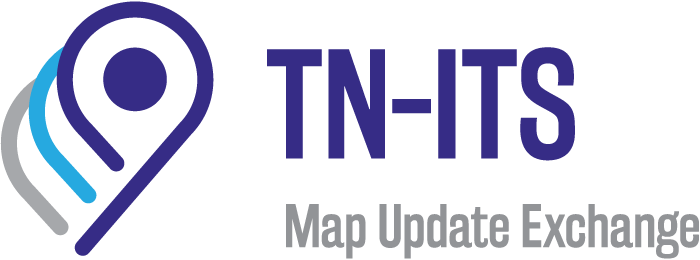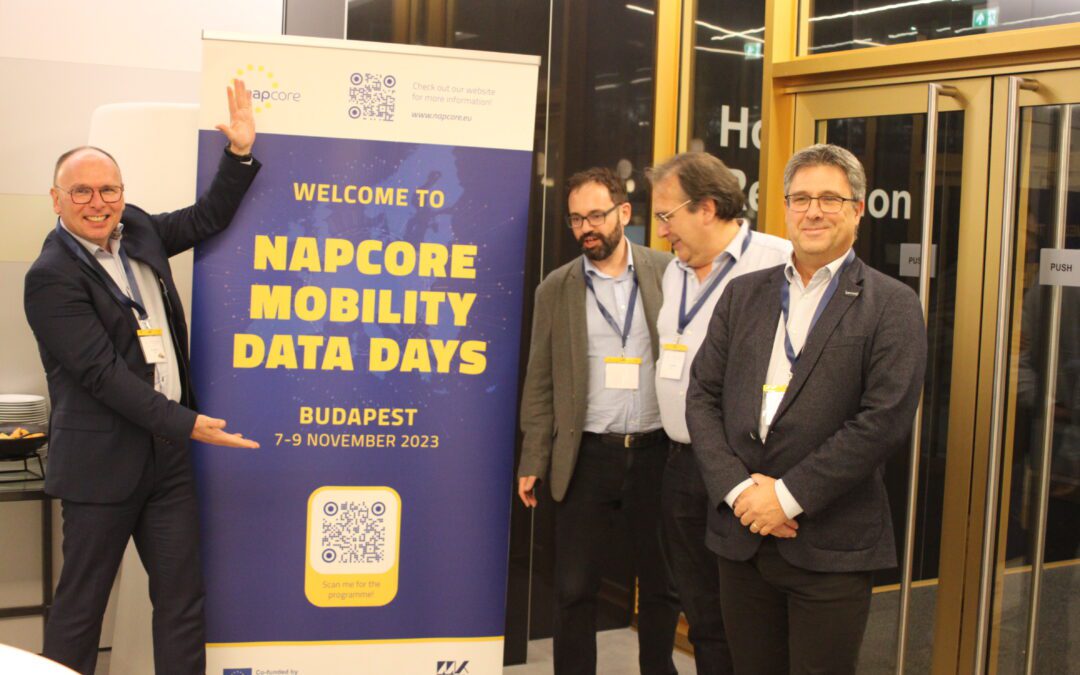Held in Budapest from November 7 to 9, the NAPCORE project hosted the NAPCORE Mobility Data Days for the second year. This annual meeting reunites its members and Advisory Board representatives, industry experts and policymakers to reflect on the latest progress and collaboratively shape the project’s future in coordinating mobility data platforms across Europe. Over 200 participants from 28 countries gathered to dive into the pressing issues shaping the future of mobility data in Europe.
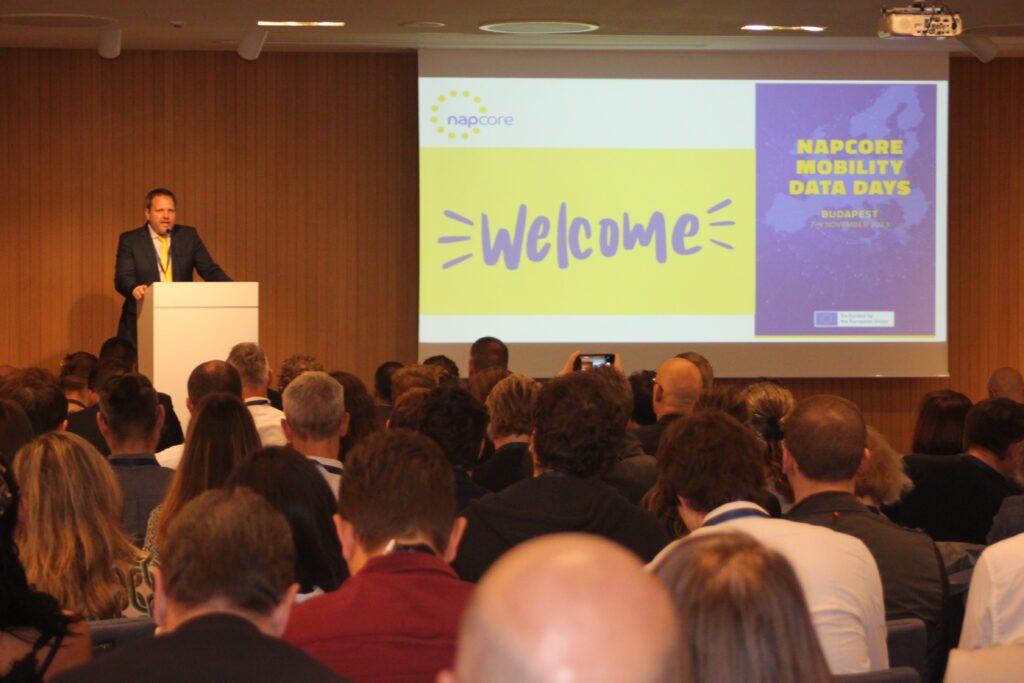
As the only mobility project with full Pan-European coverage, NAPCORE is a relevant framework for TN-ITS to continue broadening its service in more Member States. One of NAPCORE’s main objectives is to foster the harmonization of relevant standards. The TN-ITS platform’s presence at the NAPCORE Mobility Data Days underscored its commitment to driving collaboration within the mobility data domain.
The event provided an opportunity to highlight the significant progress made towards converging TN-ITS and DATEX II, two critical standards for intelligent transport systems (ITS). NAPCORE Secretary General Timo Hoffman appointed this milestone as one of the project’s greatest achievements.
Stephen T’Siobbel and Frank Daems, in representation of TN-ITS, Bard de Vries, from DATEX II, and Sylvain Belloche, leader of the NAPCORE’s working group for standard harmonisation, held a dedicated session to delve into the merger of the two standards. They shared the latest advancements since the signing of the Declaration of Lisbon during the ITS European Congress 2023. The full merger is expected to be effective by 2027. As both standards converge, the gap between Member States will narrow, enabling smoother cross-border mobility and enhanced safety for all road users.
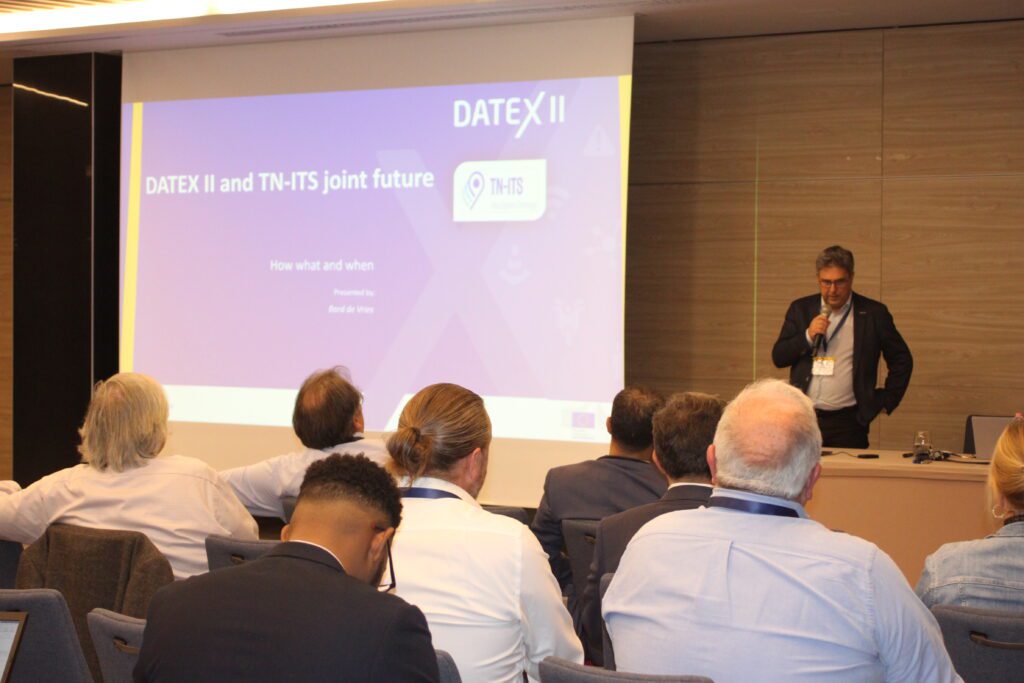
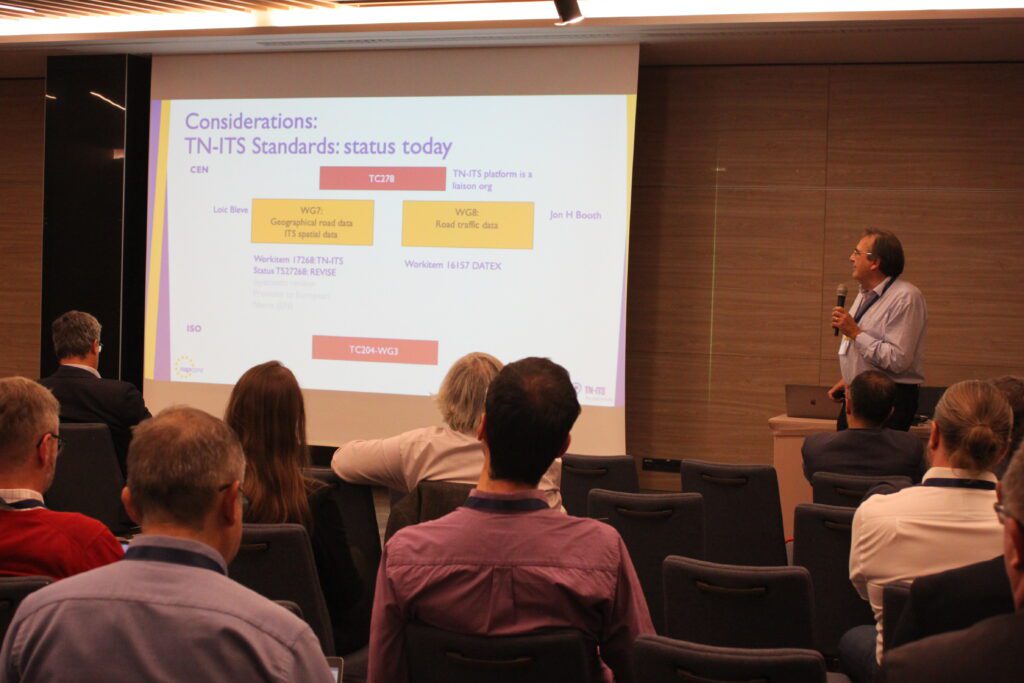
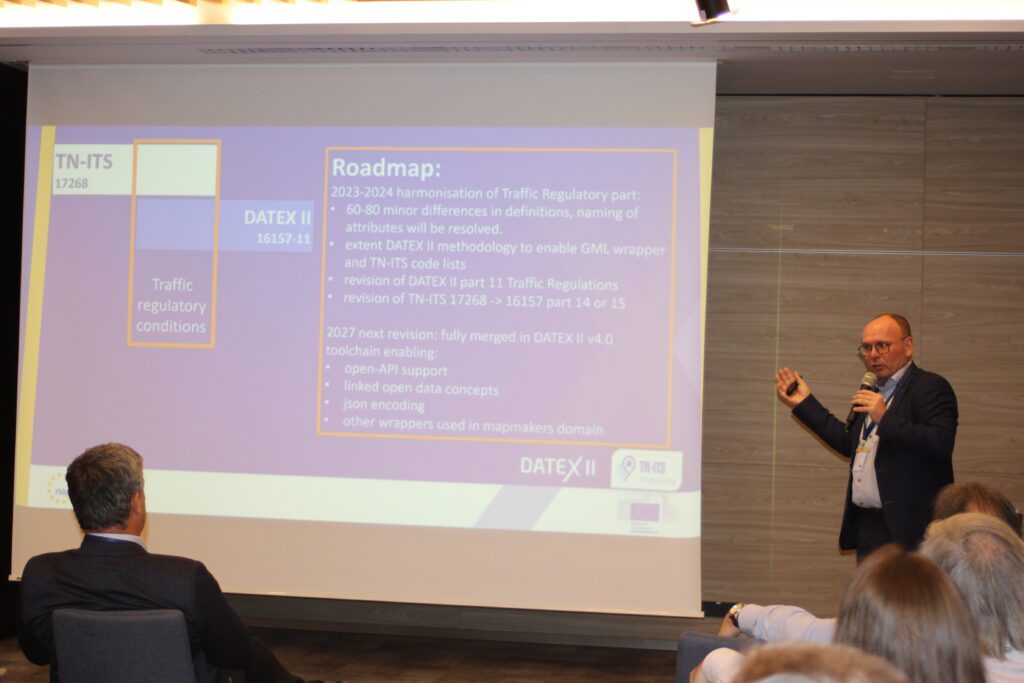
During the closing ceremony, TN-ITS president Christian Kleine (HERE Technologies) took the floor to reflect on the discussions from the three-day event and his vision of the future of NAPCORE as representative of the map makers. There is still a long way ahead, but the commendable contributions of all participants are a good omen on the road towards a seamless and interconnected European mobility ecosystem.
